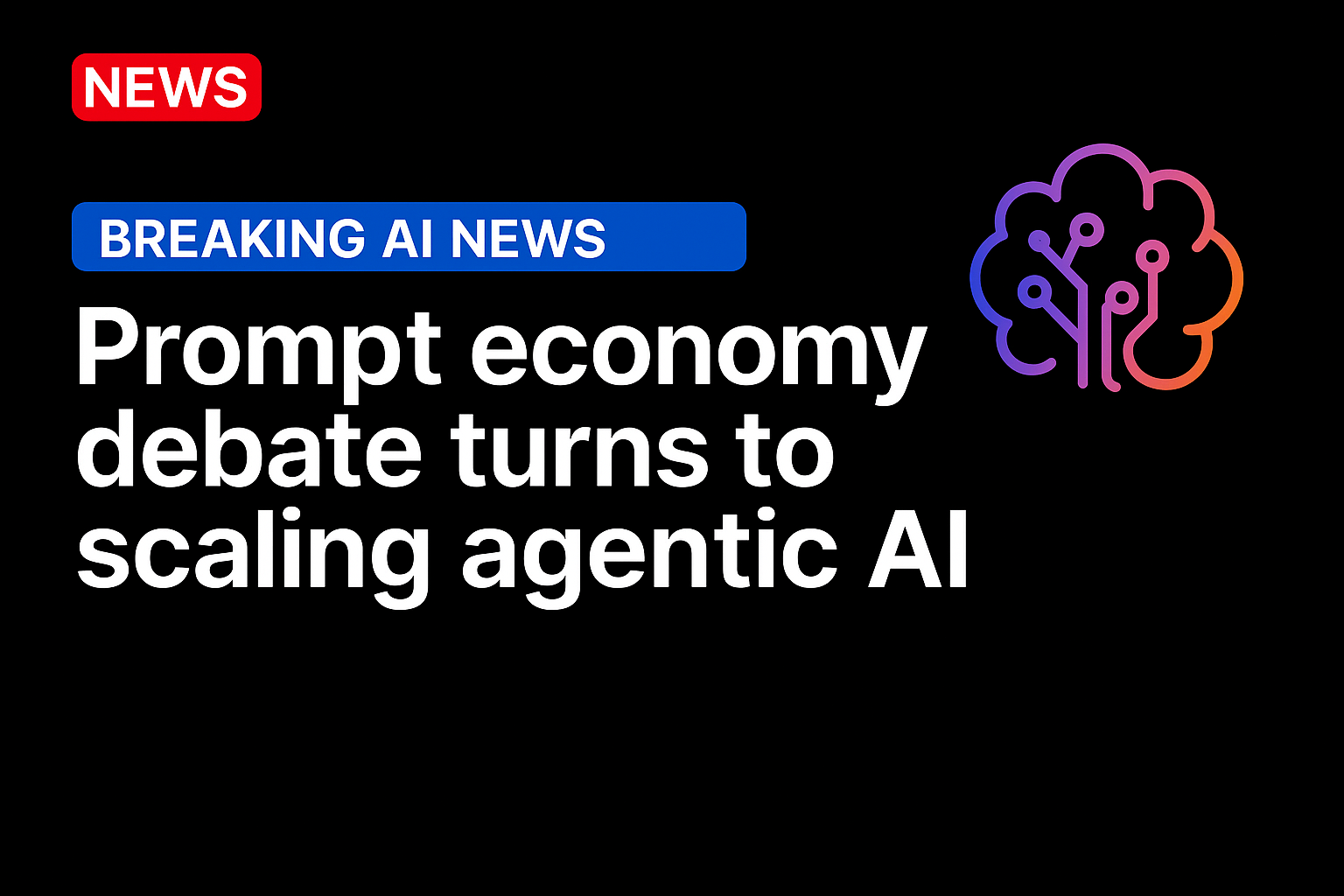
As they should, companies in all business verticals are asking some tough questions about agentic AI. Those questions defined the past week in the Prompt Economy as various thought leadership articles articulated the promise, fears and doubts around agentic AI.
One of the most dramatic questions came from MIT offshoot Liquid.AI, which asked the VentureBeat audience “What If We’ve Been Doing Agentic AI All Wrong?” Liquid AI has unveiled a new class of foundation models it calls “Nanos,” compact systems with as few as 350 million parameters that the company says can deliver GPT-4o-level performance on specialized tasks. Unlike today’s massive frontier models that require costly cloud infrastructure, Nanos are designed to run directly on phones, laptops and embedded devices. The company argues this shift could slash the cost and energy demands of AI by orders of magnitude, making it feasible to scale from millions to billions of agentic AI applications across consumer, enterprise and public-sector settings.
The initial rollout includes six task-specific models aimed at high-demand use cases: English-Japanese translation, structured data extraction, mathematical reasoning, retrieval-augmented generation and tool calling. Early benchmarks suggest the models can outperform much larger open-source systems and even approach the reliability of frontier-level offerings. For businesses, that could mean faster and cheaper AI deployments in industries like finance, eCommerce, healthcare and automotive, where speed, cost efficiency and data privacy are often as critical as raw performance.
As Liquid AI chief executive Ramin Hasani put it, the breakthrough is less about size than about architecture: “Nanos flip the deployment model. Instead of shipping every token to a data center, we ship intelligence to the device. That unlocks speed, privacy, resilience, and a cost profile that finally scales to everyone.”
Also on the techy side, Microsoft is doubling down on getting companies to understand the tech stack. Microsoft used its latest Azure AI Foundry blog to outline what it calls the “agentic web stack,” a blueprint for building enterprise-grade AI agents that can work securely and seamlessly across organizations.
The blog frames this as a turning point akin to the standardization of the internet, arguing that agents need common protocols, discovery systems, trust frameworks, orchestration tools and governance to scale responsibly. The company highlighted eight key components of this stack, from Model Context Protocol (MCP) and Agent-to-Agent (A2A) standards for communication, to registries for tracking active agents, to memory services that allow agents to learn from past interactions.
The post emphasizes that the value of this stack is practical, not theoretical. Microsoft pointed to use cases such as end-to-end business process automation, supply chain synchronization across corporate boundaries, knowledge worker augmentation and memory-driven customer journeys. In each case, the promise is faster cycle times, reduced manual intervention and stronger trust through observability and governance. By embedding identity management, compliance and telemetry into the agentic stack, Microsoft aims to position Azure AI Foundry as the enterprise platform for scaling agents while avoiding the risks of opaque, ad hoc deployments.
As the authors Yina Arenas and Ulrich Homann put it, “Much like HTTP and TCP/IP standardized the internet, this stack provides the common services and protocols needed to make multi-agent ecosystems secure, scalable, and interoperable across organizational boundaries.”
Amazon also released a white paper on the tech stack last week, focused on identity. Amazon and SailPoint have introduced Harbor Pilot, an identity security platform powered by Amazon Bedrock that brings agentic AI into enterprise compliance and access management. Harbor Pilot uses a fleet of AI-driven agents to automate documentation queries, build workflows in real time and resolve identity issues on demand. Instead of relying on manual processes or long support cycles, administrators can now create complex workflows in minutes and receive instant answers to compliance questions. The solution runs on AWS architecture, combining services like Elastic Kubernetes Service, OpenSearch, and CloudWatch with security-first design to deliver scalable and reliable governance for enterprises.
Adoption since its March 2025 launch has been swift. Half of customers onboarded within 30 days, with early users reporting reductions in workflow creation times from hours to minutes and a shift from multi-week ticket resolution to instant query responses. Enterprises see Harbor Pilot as a force multiplier: automating routine identity tasks while strengthening compliance controls. Future enhancements include natural language access requests, custom analytics and session history, broadening its role as a context-aware assistant embedded across SailPoint Identity Security Cloud.
As one customer testimonial put it, “Truly impressive in terms of the workflow builds. It was able to build a complex workflow accurately in minutes that would have taken hours to build manually.”
Source: https://www.pymnts.com/




